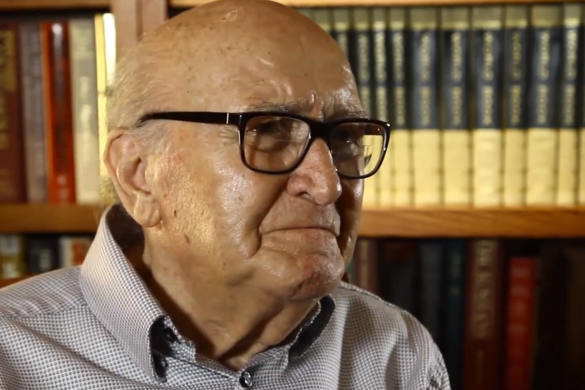The Religion of Light and Sound takes a Midwestern approach to spirituality
Words and photos by Sydney Price
The Temple of ECK looks like a Mesopotamian office complex. The first floor is all right angles and rectangular pillars like a government building. On top, though, is a shimmering golden pyramid-shaped structure that can be seen from a distance.
It’s a ziggurat with seven “steps,” resembling a form of temple construction dating back to the 6th century. It sticks out in modern-day Chanhassen, Minnesota—even more so than Prince’s Paisley Park Studios, which is just around the corner. But those seven steps are symbolic. They’re the steps believers of Eckankar, also known as the Religion of Light and Sound, take to get closer to God.
“People ask, is this the number of steps we take?” said Shirley Towne, a member of the Eckankar clergy who’s been studying the religion for the last 17 years. “No, the number doesn’t mean anything. It’s always expanding, always unlimited. There’s always more steps to take.”
Paul Twitchell, an often controversial figure and long-time author, founded Eckankar in its modern form in the mid-1960s, when he compiled the teachings of the religion into writing. Towne explained that Eckankar had previously been passed down through word of mouth and had no headquarters or main temple.
There’s a lot of energy in this part of the country. Their work ethic is very strong. Their values are very strong, and these are all things that are valuable for living on the physical plane.”
-Shirley Towne
“(Twitchell) talked about a spiritual center, where Eckankar would make its home,” Towne said. But the location had not been chosen yet when he died. As it turned out, Midwestern values fit in well with Eckankar’s mission.
“There’s a lot of energy in this part of the country,” Towne said. “Their work ethic is very strong. Their values are very strong, and these are all things that are valuable for living on the physical plane.”
People who practice Eckankar believe that each person is a Soul, or a piece of God sent to earth to gain spiritual experiences. “ECK” is their name for the holy spirit. ECKists also believe in karma and reincarnation; as the soul gains spiritual experience, it moves up various levels, known as planes of existence.
Especially important to followers of Eckankar are the concepts of Light and Sound. Light and Sound are believed to be the two life currents that flow from the holy spirit. Members try to experience the Light and Sound of God for themselves through spiritual exercises and music.
Inside the temple, a cool blue light emits from the ceiling, where a dramatic six-pointed star takes up most of the space. This represents the Star of the Mahanta, or inner guide. Seeing a blue or white light in a dream or contemplative state is believed to be a manifestation of the supreme being.
To experience the sound of God, ECKists sing HU songs. At the temple, a community HU song is held on the third Sunday of the month. (The first Sunday of the month is reserved for worship services.) “HU is an ancient name for God. We sing it to open our hearts. It’s a love song to God. If there’s anything that’s called ‘prayer’ in Eckankar, that’s it,” Towne said.










So, why the Midwest?
Benny Callaghan, an Australian who moved to Minnesota to work for the temple, explained how the temple’s current location was chosen: “Our spiritual leader received a vision, if you’d like, a spiritual guidance that the home should be here. He started to explore the Twin Cities and found this property, found it suitable to who we are and what we’d be doing.”
Eckankar has satellite ECK centers across the world where followers gather to study and worship. Debbie Bryk-Serva, a retired pediatric cardiologist, now oversees Eckankar activities in Iowa and Illinois. The latter has two ECK centers.
When Bryk-Serva first heard about ECK, it was completely new to her. “When I first learned about it, it was very different to anything I’d ever come across,” she said. “It was very foreign. But what struck me the most—I met two ECKists, and what really struck me was how much love they had for each other. ”
Dennis Ingolfsland, a professor of theology at nearby Crown College, a small Christian school, says that some locals are wary of ECK. But the various religious groups in the community still live together peacefully.
“We coexist just fine. I have never heard of any hostility between us. I’ve never been to their temple, but pretty much every Christian I’ve met who went there said they sensed some kind of evil presence,” Ingolfsland said. “Having said that, ECKists have always been hospitable to Christians who have visited their temple, and if they ever came here, we would treat them with love and respect as well.”
Today, the temple complex spans a sprawling 174 acres, with two miles of trails. Both the temple and trails are open to the public for contemplation, prayer or simply enjoying the serenity of the natural landscape.
“It’s become a destination point. People come here on a kind of pilgrimage to see it,” Callaghan said. “It’s such an important place to those who study the teachings.”
Even if it does stand out a little.












